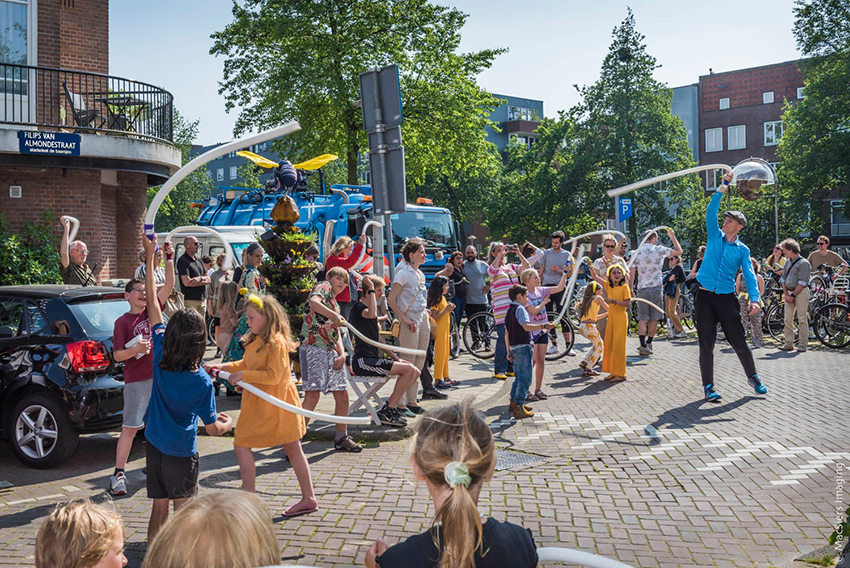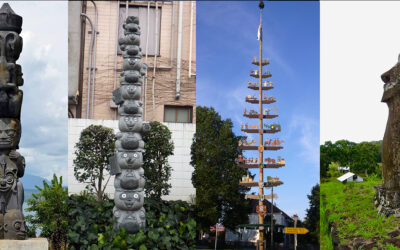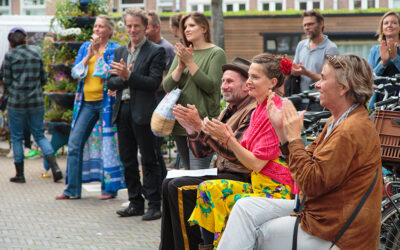Within a BeeTotem project in an urban neighbourhood, several key components come into play:
- Preparatory Phase: Local residents are actively engaged and mobilised to adopt the BeeTotem.
- BeeTotem Structure: The BeeTotem stands 2.8 meters tall with a ground area of approximately 1.20 meters in diameter. Crafted from non-toxic, recycled plastic via 3D printing, it features five plant-filled bowls and is securely anchored in the ground. The total weight of the BeeTotem is (depending on wet or dry soil) around 150 kilograms.
- Bee Specimen Imagery: Incorporated within the Totem is a 3D-printed representation of a specific wild bee specimen, magnified around 10,000 times. This image is derived from a Nature Museum’s archives, comprising 28,000 highly precise photos scanned using top-tier European 3D scanning equipment at the University in Darmstadt.
- Planting and Soil: The Totem is filled with 240 litres of organic garden soil, along with a diverse array of organic flowers and plants meticulously selected to cater to the needs of a particular wild bee species throughout all seasons. Collaborations with specialised nurseries facilitate this aspect.
- BeeHotel: An above-ground or below-ground BeeHotel is included, tailored to the preferences of the bee species.
- QR Code-Paved Stone: Adjacent to the BeeTotem, a coloured paving stone featuring a QR code provides access to detailed information about the project, the specific bee species, and the Totem’s planting scheme.
- Interactive Webpage: A dedicated community webpage centred around the particular BeeTotem allows local residents to upload photos and maintain records of their BeeTotem experiences.
- Neighbourhood Opening Event: A communal event is organised to inaugurate the BeeTotem.
- Utensils: Hosts receive tools such as buckets imprinted with instructions regarding kitchen scrap management for the worms.
- Educational Program: For those interested, an educational program targeting primary schools within the neighbourhood is available.
- Biodiversity Contribution: Beyond all these components, participation in the BeeTotem initiative represents a valuable contribution to the preservation of the local wild bee population and the promotion of a more biodiverse and habitable city for its residents.
Image: MacSiersImaging


